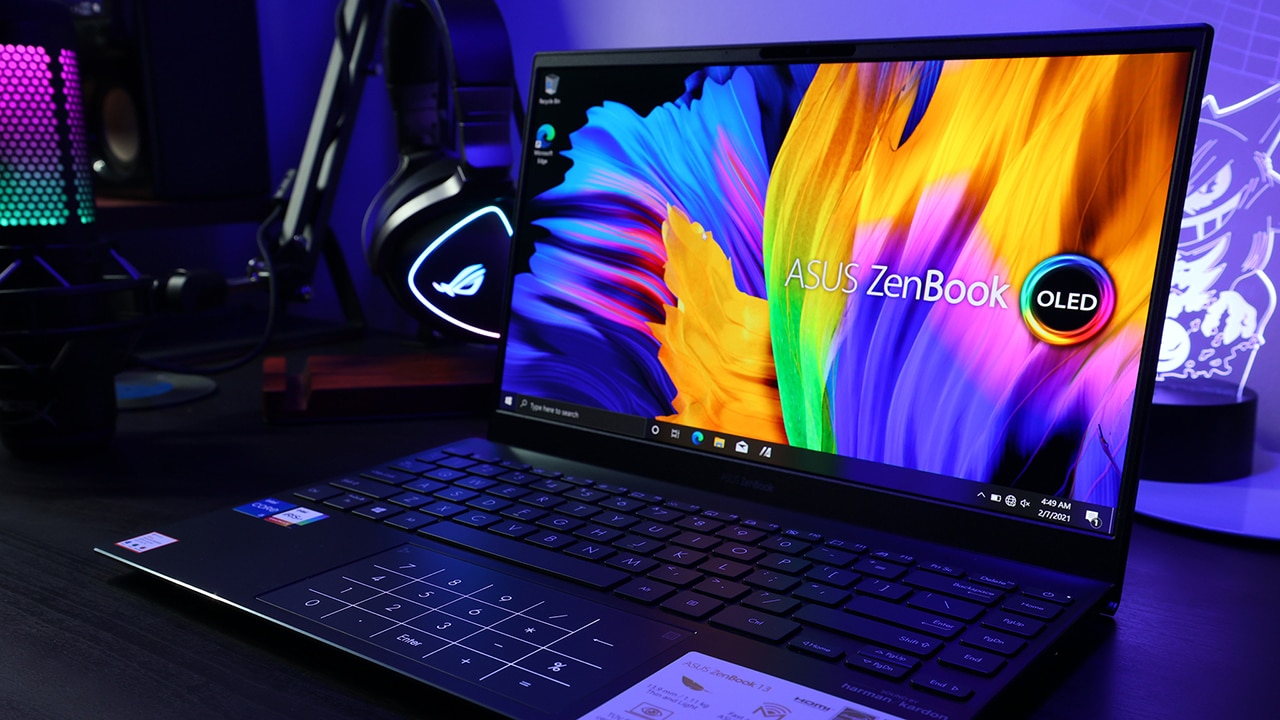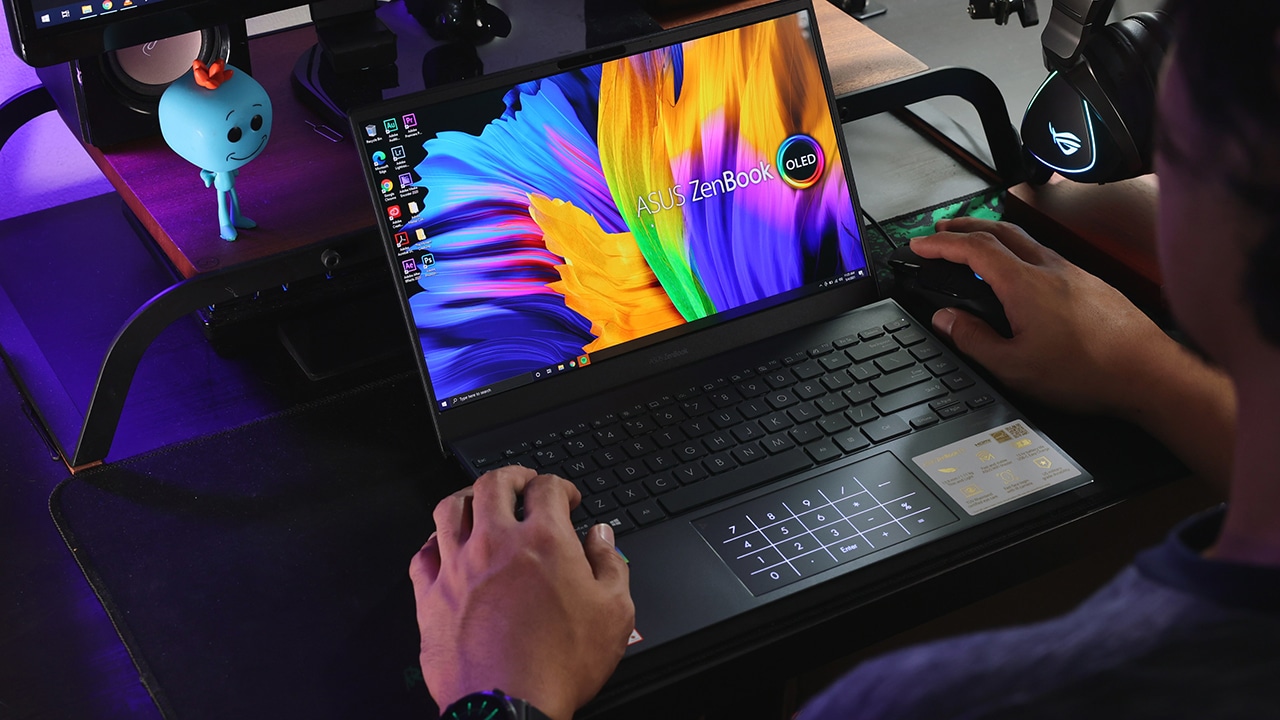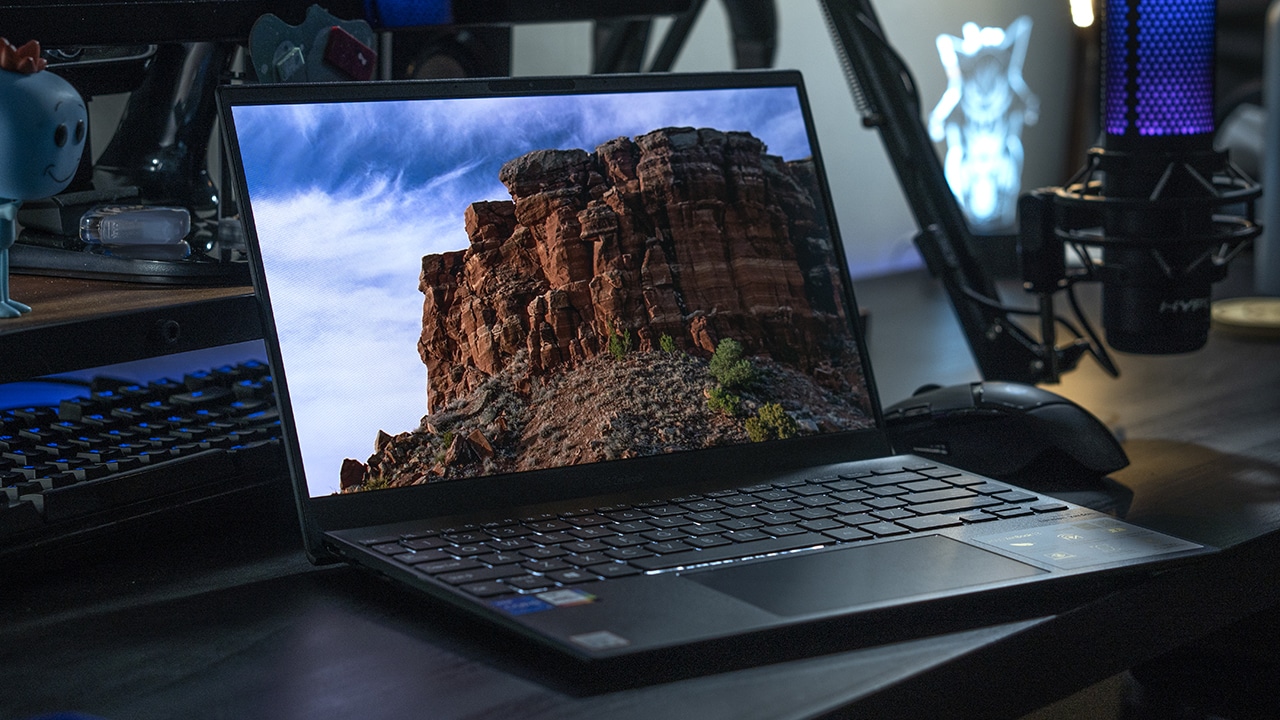This is a sponsored article by ASUS Philippines.
We’ve shown you our ASUS ZenBook 13 OLED (UX325) review and we talked about the values added by its 13.3-inch OLED display plus the processing power of its internals supported by Intel. As a quick refresher, it comes with the latest 11th Gen Intel Core i5 CPU with Intel Iris Xe graphics and is backed up by 8GB of RAM, 512GB SSD, and WiFi 6, among other useful features.
Although, ASUS Philippines is also offering another variant and it’s the ZenBook 13 OLED (UM325) — it’s pretty much the same notebook but comes with AMD-made internals.
Want to know which to get between the two? We highlight the key differences in this quick article!
Design

As mentioned, the UM325 is basically the same ZenBook 13 OLED but with slight tweaks for its internals. But in terms of design, there are a couple of things to take note of. One is that the Intel-powered UX325 is slightly lighter in weight than the UM325 (1.07kg vs 1.14kg).
It’s not a huge leap in weight but as with some users that I know, these small things matter especially when you’re always traveling.

Additionally, the UM325 ditches Thunderbolt 4 ports with a full range of charging and only offers a single USB 3.2 Gen 1, two USB 3.2 Gen 2, a single HDMI, and a microSD reader.
Quick heads up in terms of design, there is also a ZenBook 14 (UM425) but it only uses an IPS panel instead of an OLED one so you get a bigger display in exchange for less vibrant colors and deep blacks.
RELATED: 5 Benefits of having a Laptop with OLED Display
Processor
Now we head over to the main differences. It’s a matter of choosing whether you want Intel to power your laptop or let AMD’s components do the job. Here’s a closer look at the specs. As a quick reminder, these are just numbers we’re comparing since we don’t have two units with us to conduct a full-on comparison.

ZenBook 13 OLED UX325 is equipped with an 11th-gen Intel Core i5-1135G7 processor while the UM325 comes with AMD’s Ryzen 7 5700U CPU. From specs alone, AMD’s processor has a higher base frequency (1.8GHz vs 0.9GHz-2.4GHz) and turbo frequency (4.3GHz vs 4.2GHz) as well as higher core count (8 cores vs 4 cores) and thread count (16 threads vs 8 threads).
This could potentially result in better and faster performances for multi-core processes. Meanwhile, Intel’s single-core performance should yield better benchmark scores.
Graphics

As for graphics, both have integrated GPUs with the UX325 sporting Intel’s Iris Xe Graphics G7 80EU and the UM325 boasting an AMD Radeon RX Vega 8. Again, AMD outputs higher numbers when it comes to GPU boost clock (1750MHz vs 1100MHz).
Although, the Iris Xe graphics came on top for shading units (640 vs 512) with a 10nm fabrication process (vs 7nm of UM325).
RAM

Then we go to the onboard RAM. The UX325 variant maxes out at 8GB while the UM325 could go up to 16GB storage. If you find your work to be reliant on speed and multitasking, you’d want to go for higher RAM.
ASUS ZenBook 13 OLED Price in Philippines

Of course, with different sets for internals, there is also a difference in pricing. The Intel-powered ZenBook 13 OLED comes at PhP 59,995 while the AMD-backed ZenBook 13 OLED is more affordable at PhP 54,995 (8GB/512GB) with tradeoffs like the lack of Thunderbolt 4 ports.
What do you think of these two variants? Which do you prefer and why? Let us know in the comments!
















